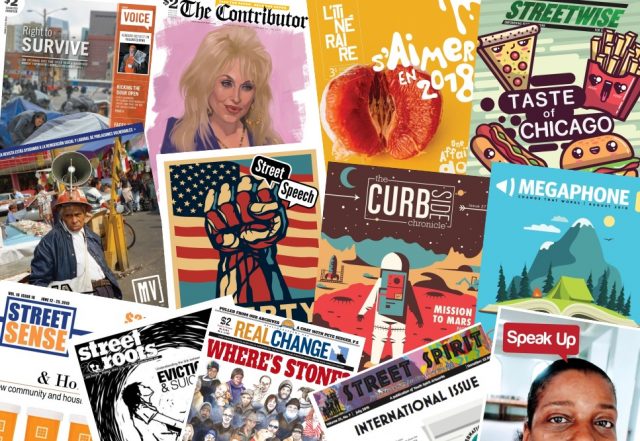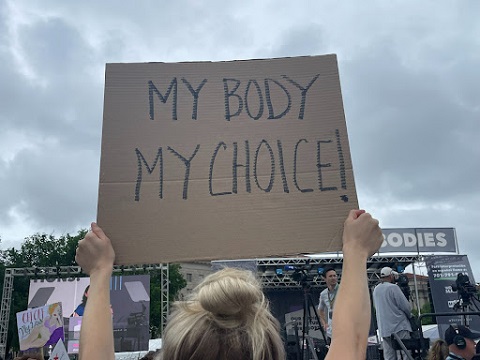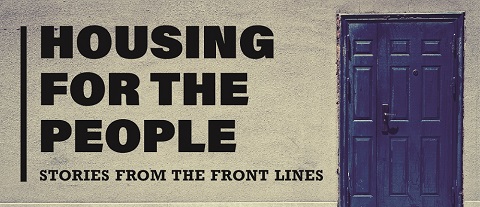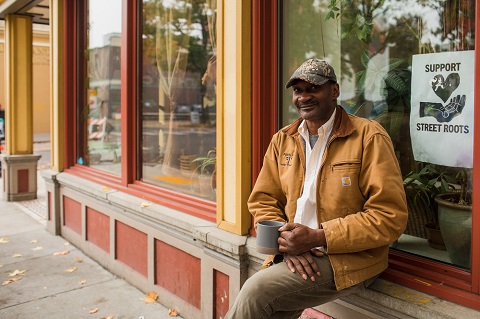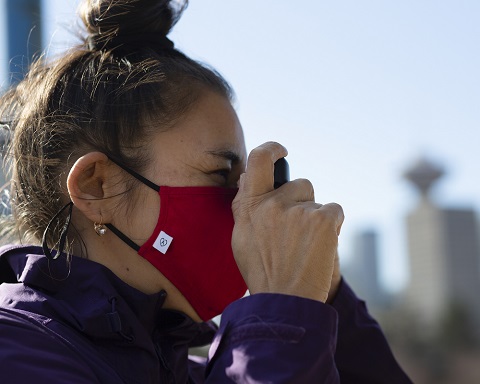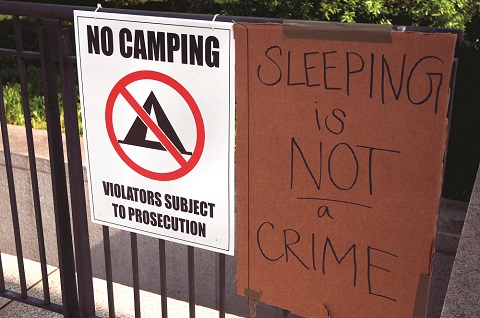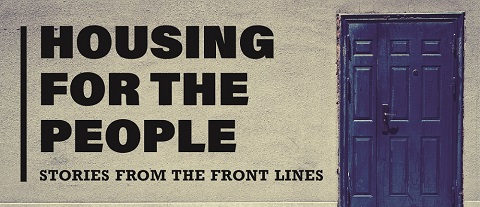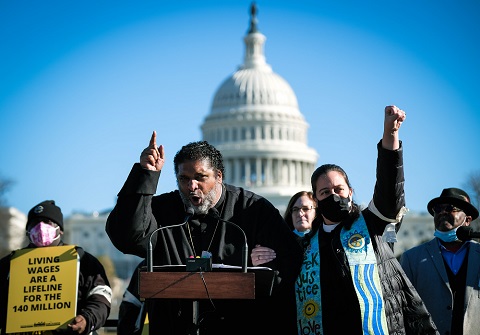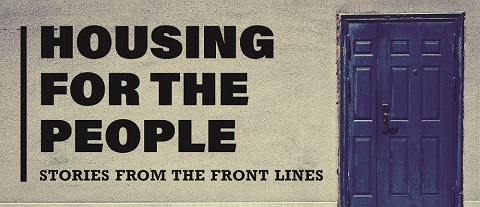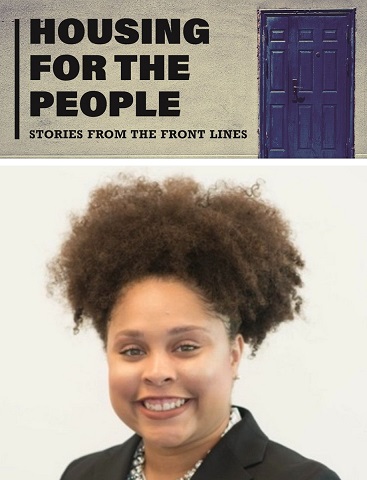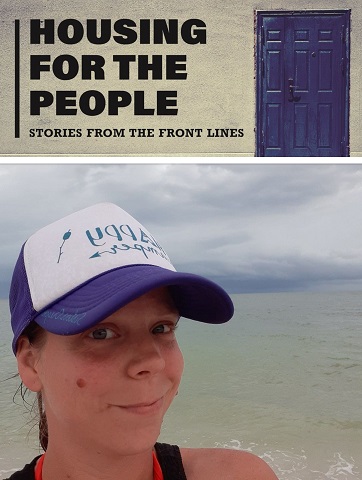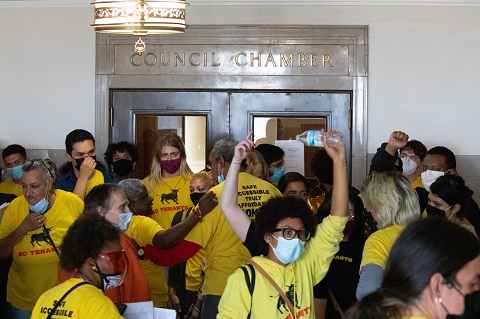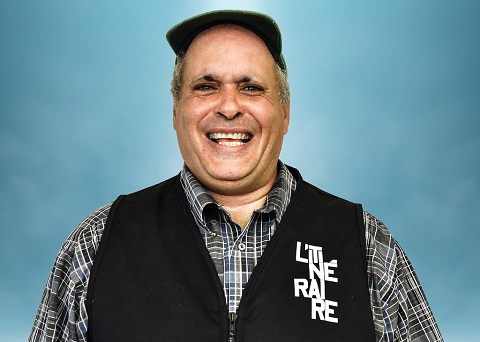By Jake Maher, Street Sense Media
As near-constant Black Lives Matter protests have become a fixture near the White House, people experiencing homelessness in the District are finding themselves caught in the crossfire between demonstrators and law enforcement.
Protesters have taken to the streets in DC every day since 29 May, prompted by the 25 May killing of George Floyd, an unarmed Black man in police custody, by a white Minneapolis police officer. They are calling for an end to the racist abuse of police power against Black people and defunding police departments to instead invest more in public health services, education, affordable housing, and more. The demonstrations have upturned daily life for those who live in downtown DC, due to the heavily increased police presence, violent tactics used to disperse crowds of protesters — including rubber bullets, tear gas, and low-flying military helicopters — and sporadic incidents of looting.

For homeless people who sleep on the streets and in the parks in the area, the protests have also led to injuries and disruption, and many have mixed feelings about the demonstrations.
Lissa Ramsepaul, Street Sense Media’s clinical director, reported several injuries among homeless people living downtown whom she’s visited during street outreach: wounds from police rubber bullets, scrapes and bruises from crowds of people rushing through the area, and three people whom she found struggling to breathe due to the effects of pepper spray or tear gas. She said she helped many of the people get to the hospital and personally called an ambulance for a man who was “gasping for air.”
Darren, a man living in Franklin Square, said his tent was slashed when police chased protesters through the park, although he wasn’t sure which group was responsible. Laticia Brock, a Street Sense Media vendor, said her tent across the street from Union Station was burned during the protests, though she similarly did not know who was responsible.
Attacks against people experiencing homelessness have been reported in other cities, too. Street Roots reported that someone posted a YouTube video of a man punching and shoving a homeless man after protests in Portland, Oregon. The Los Angeles Daily News reported that police shot a homeless man in a wheelchair in Los Angeles with a rubber bullet, and a viral video appears to show a crowd setting a homeless man’s mattress on fire in Austin, Texas. Some Twitter users alleged that workers for the conspiracy-theory website Infowars who recorded the fire were also responsible for the attack. A fundraiser has been set up to pay for the man’s belongings.

Looting, Ramsepaul said, was especially concerning to the homeless people she’s spoken to; she reported receiving seven calls about fears of violence by looters, including four in a single night over the weekend. For instance, she said Gerald Anderson, a homeless man, was sleeping near the intersection of 11th and G streets NW when a looter smashed a window over him, forcing him to dodge falling glass.
In addition to physical harm, she said many Street Sense Media vendors experiencing homelessness or housing instability are concerned that looters will harm businesses that are already weakened by COVID-19 closures and where they sell papers. In some cases, vendors have built relationships with the business owners over time and are worried about them personally.
Moreover, as people who depend on an influx of visitors into downtown DC every day for income, many homeless individuals are worried the protests may make people reluctant to go there. With many downtown CVS locations closed due to fears of looting, Ramsepaul said it’s been harder for some homeless people to get their medications.
The heightened police presence downtown has also adversely affected the ability of some organizations to deliver critical services. Martha’s Table used to provide daily meals at 15th and I streets NW at McPherson Square Park every evening. For the first time since 1983, they moved the location to 14th and K streets NW due to street closures and arrived much later. The National Guard allowed their van through the next day when streets remained closed, still causing a delay.
![Moon - homeless in DC - with a sign for protest. [Credit: Benjamin Burgess / K Street Photography]](https://hub.insp.ngo/wp-content/uploads/2020/06/SSE_Protests-homeless_6-1.jpg)
The organization plans to stay at the new location next to Franklin Park as long as the protests last. Martha’s Table has been serving many more people since the coronavirus pandemic started — but demand was down at the new location and fluctuating time. The change was so abrupt that they could only spread the news by word of mouth, with one team member running to McPherson Square to let people there know where the van had to park.
Many of the homeless people in Franklin Square, Farragut Square, and McPherson Square were indifferent to the protests or did not know what they were about. Many also said they have not been bothered by the increase in police in the area since the protests started.
Gerry G. Martin in Farragut Square said rioting “isn’t the smartest thing to do” and that he disagreed with it, but he thought the police shouldn’t be attacking protesters either. He said he’d seen instances of police brutality against homeless people but also seen homeless people breaking laws.
Other people experiencing homelessness support the aims of the protests. Ramsepaul said the injured people she had spoken to support the demonstrations but also feel a “sense of helplessness” about the prospect of achieving meaningful change.
Darren in Franklin Square similarly supported the protests, saying that laws should uphold equality. He blamed the looting that took place the first several days on “out-of-towners destroying the city.”
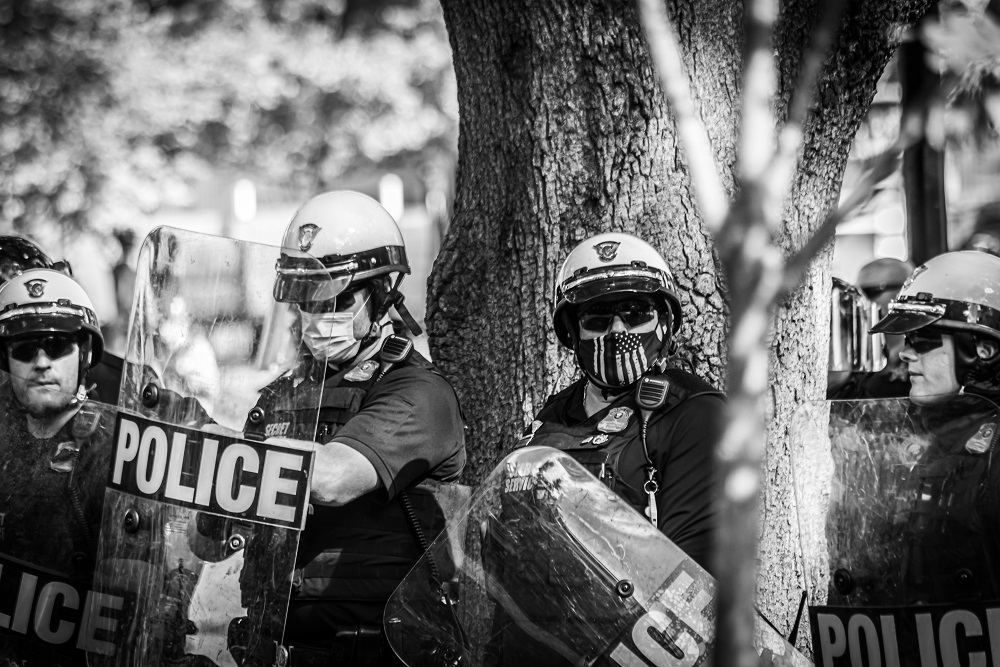
The protests have been mostly peaceful since 3 June, with the number of police officers and soldiers on the street reduced and the curfew instated by Mayor Bowser lifted. Protestors remain a constant presence at Lafayette Square across from the White House, with thousands filling the streets on 6 June. People experiencing homelessness were not specifically excluded by the text of DC’s curfew order, but a spokesperson for the mayor’s office confirmed over email that the curfews last week did not apply to them.
One man in Farragut Square, who refused to give his name, agreed about who was responsible for the damage: “People in DC don’t go around busting windows, because we have to live here.”
He said that he agreed with the goals of the protests, and that although the police violence that sparked the protests didn’t have to do with DC, “the only way to get their attention on Pennsylvania Avenue is doing what’s being done.”
“You can only push a person so far before they start pushing back,” he said. “You can’t blame the people.”




